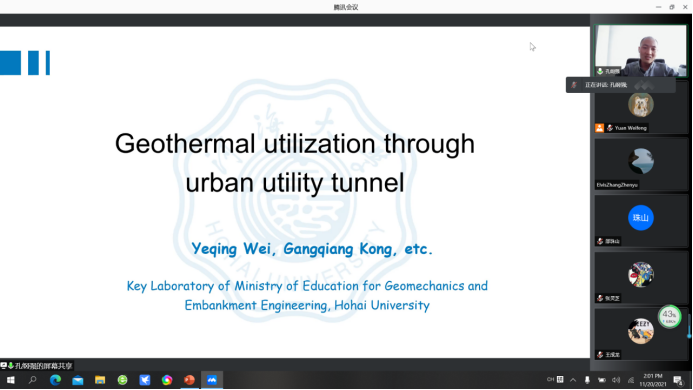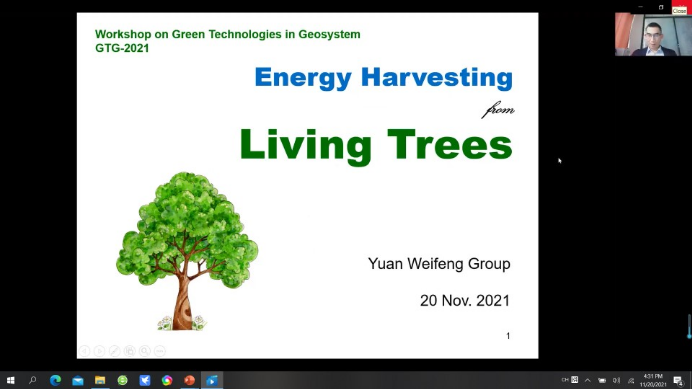Green Technologies in Geosystem online workshop sponsored by SCE
Hosted by Prof. Zhang Wengang, Associate Chair of School of Civil Engineering, Chongqing University, the 2021 Conference on Green Technologies in Geosystem was held online as scheduled on November 20, 2021. Prof Zhang invited Prof. Kong Gangqiang from Hohai Univ., Prof. Shao Zhushan from Xi 'an Univ. of Arch. and Tech., Dr. Wang Chenglong from Chongqing Univ., Prof. Yuan Weifeng from Southwest Univ. of Sci. and Tech., and Dr. Zhao Zhaoyang from Nanyang Technol. Univ. to deliver academic presentations.

Prof. Zhang Wengang firstly gave a brief introduction to the participants and then put forward views on the integration of the national green development concept with discipline development. He had advocated multi-disciplinary and innovative research to promote the green technology under the background of ecological development,as well as the strategy of carbon neutrality and emission peak.
Prof. Kong Gangqiang shared a kind of energy urban utility tunnel located in the soil variable temperature layer. After the testing of heating and cooling mode, he proposed that the shallow geothermal energy can be extracted by embedding heat exchange tubes in the urban utility tunnel, and the heat transfer efficiency of this extraction method is basically the same as that of the extraction in the constant temperature layer, the influence of temperature cycle on the concrete structure itself is limited.

Prof. Shao Zhushan shared "Mechanics and advances for microwave assisted concrete recycling". A new method, microwave concrete, was proposed to solve the problem of low utilization rate of waste concrete. This method has good separation effect, low damage, low energy consumption and environmental protection, but there are still some problems in macro and micro aspects that need further investigation.
Based on an interesting discovery: the electrode inserted in the tree has voltage and current reaction, Prof. Yuan Weifeng made the corresponding exploration of small energy acquisition. By experimenting with different plants, he proposed that it was possible to harvest bioenergy from trees, but because of the high internal resistance, the current in the circuit was small and the voltage was on the order of microvoltage.

Wang Chenglong shared "Analysis of Load Transfer Mechanism and Bearing Characteristics of Energy Pile in Saturated clay". Based on the model test, the strain stress response of pile body under different temperature system is introduced, and it is found that the strength of thermosetting soil is improved after cold and hot cycling.
Zhao Chaoyang shared a cantilever-type triboelectric energy harvester working on contact-separation mode to harness base vibration energy from the ambient environment. The proposed harvester can also be applied in low-wind velocity energy harvesting by adding a bluff body on the tip of the cantilever beam. An aero-electro-mechanical model has been proposed considering the aerodynamic force and impact force for harvester’s structural optimization. The harvester demonstrates its ability to power sensor nodes and realize wireless sensing. Future research will focus on broad bandwidth and modularized harvesters.

After the meeting, Prof. Zhang Wengang expressed his gratitude to all speakers for their wonderful sharing, exchanged ideas and took online group photos.
